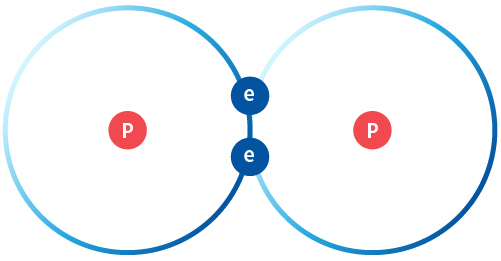Product Background
The Story of Hydrogen Therapy
The History of Hydrogen Therapy

Source: Timeline of Hydrogen Therapy, Japanese Ministry of Health, Labour and Welfare
As of June 2024, research on hydrogen therapy has led to the publication of over 2,000 research papers and more than 100 clinical trial reports. Although there has been much debate over the past 17 years regarding the medical efficacy of hydrogen (H2), our understanding of its benefits has recently become more established.
Despite the fact that hydrogen is naturally produced in the human gut and hydrogen-rich water has been used for centuries, we have long lived without recognizing its potential benefits. However, in 2007, a landmark paper by Dr. Shigeo Ohta from Japan demonstrated the therapeutic effects of hydrogen, sparking the interest of numerous researchers who have since published a wide range of studies.
This paper marked the beginning of significant medical interest in hydrogen, and it is considered that the formal research into hydrogen therapy truly began in 2007.
What Are the Hydrogen Isotopes: Deuterium and Tritium?
Hydrogen, represented by the symbol ‘H’ and holding the first position on the periodic table, is the lightest of all elements. It consists of one electron and one proton and typically exists in diatomic form, such as molecular hydrogen (H₂), under normal conditions. Hydrogen is central to universal cosmological theories that explain the early development of the universe and the origin of life.

Forms of Hydrogen: Atomic Hydrogen
A single hydrogen atom (H•) is neutral and contains an unpaired electron, which is represented by the small dot “•.” Due to this characteristic, it becomes a highly reactive free radical, making atomic hydrogen very rare in nature. Atomic hydrogen produced through electrolysis easily bonds with another hydrogen atom to form stable molecular hydrogen (H• + H• => H₂).
In the 1990s, the therapeutic effects of atomic hydrogen were proposed in Japan, but this reactive atomic hydrogen was incorrectly translated as “active hydrogen.” The term “active hydrogen” is not a scientific term; it belongs to pseudoscience and is often used in exaggerated marketing claims. From a physical-chemical perspective, it is impossible for atomic hydrogen to exist stably.

Forms of Hydrogen: Molecular Hydrogen
When we refer to hydrogen, we are talking about molecular hydrogen, H2. This means that two hydrogen atoms (H) are covalently bonded (a type of chemical bond) as HH. Because it consists of two hydrogen atoms, we also call it diatomic hydrogen.
The hydrogen molecule contains two protons and two electrons, making it a neutral molecule. It is a colorless, odorless, tasteless, non-metallic, highly flammable gas.
This molecular hydrogen is the form of hydrogen that has been found to exert a wide range of therapeutic effects.
The Mechanism of Hydrogen Gas Production in the Human Colon and Its Effects on the Body

메커니즘
Hydrogen gas is produced in the colon of all animals, including humans. This gas is generated during the fermentation process carried out by gut microbes, particularly through the breakdown of indigestible carbohydrates such as dietary fiber by various anaerobic bacteria in the colon. As a result of this metabolic activity in the primary fermentation stage, hydrogen is produced as one of the final byproducts.
Certain types of bacteria, which contain hydrogenase enzymes, are responsible for this hydrogen production. These bacteria anaerobically ferment carbohydrates, releasing hydrogen gas. The released hydrogen gas can then be utilized by other microbes in the colon, such as methanogens and sulfate-reducing bacteria, which convert it into methane and hydrogen sulfide, respectively.
Hydrogen gas production can be influenced by various factors, including the types of bacteria present, the pH conditions in the colon, and the presence of metabolic byproducts like bile acids. For instance, bile acids have been found to inhibit methane production, leading to higher levels of hydrogen gas in some individuals.
Effects on the Human Body
Hydrogen gas produced in the colon plays several important roles in the human body. One key role is its involvement in the metabolism of gut microbes, where hydrogen acts as an electron donor in various microbial metabolic pathways, promoting the growth and function of the gut microbiota.
From a broader physiological perspective, hydrogen gas enters human cells and influences various cellular processes. Specifically, it affects the Krebs cycle, which is crucial for ATP synthesis, thereby contributing to the body’s energy production and potentially impacting overall metabolism and immune function.
Additionally, hydrogen gas is recognized for its potential therapeutic effects due to its antioxidant properties. It neutralizes reactive oxygen species (ROS), reducing oxidative stress and inflammation in the body. As a result, hydrogen has been shown to be a promising agent for treating conditions characterized by oxidative damage and inflammation.
In Summary
The production of hydrogen gas in the human colon occurs through microbial fermentation. This gas has potential therapeutic effects and plays a beneficial role in digestive health and overall physiological functions.
Next, let’s take a look at two papers related to the history of hydrogen inhalation therapy.

The On/Off History of Hydrogen in Medicine: Will the Interest Persist This Time Around?
Southern Utah University, Department of Exercise Science and Outdoor Recreation, Cedar City, UT 84720, USA. Molecular Hydrogen Institute, Enoch, UT 84721, USA.
Abstract: Over 2000 publications including more than 100 human studies seem to indicate that humans have only recently benefited from or known about the medical effects of H2 within the past 15 years.
However, we have unknowingly benefited from H2 since the dawn of time, from H2-producing bacteria to the use of naturally occurring hydrogen-rich waters. Moreover, the first writings on the therapeutic effects of H2 date to around 1793.
Since then, papers appeared sporadically in the literature every few decades but never exploded until Ohsawa et al. again demonstrated hydrogen’s therapeutic effects in 2007.
This landmark paper appears to have been the spark that ignited the medical interest in hydrogen.
Although H2 was used in the 1880s to locate intestinal perforations, in the 1940s in deep sea diving, and in the 1960s to measure blood flow, H2 was largely viewed as biologically inert.
This review highlights the history of hydrogen in the genesis/evolution of life and its medicinal and non-medicinal use in humans. Although hydrogen medicine has a long and erratic history, perhaps future history will show that, this time around, these 15 years of ignited interest resulted in a self-sustaining explosion of its unique medical effects.
The evolution of molecular hydrogen: a noteworthy potential therapy with clinical significance
The Evolution of Molecular Hydrogen: A Clinically Significant Potential Therapy
Department of Physiology, Loma Linda University School of Medicine, Risley
Hall, Room 223, Loma Linda, CA 92354, USA
Research on molecular hydrogen has advanced tremendously in recent years. Hydrogen is unique because of its ability to act at the cellular level. It can cross the blood-brain barrier, enter mitochondria, and, under certain conditions, move into the nucleus. Studies have shown that once hydrogen reaches these ideal locations within the cell, it exhibits beneficial properties such as antioxidant effects, anti-apoptosis, anti-inflammatory actions, and cellular protection.
With minimal side effects, hydrogen has the potential to become a new, comprehensive treatment for cardiovascular, cerebrovascular, cancer, metabolic, and respiratory diseases and disorders. This review article aims to explore and comprehensively analyze the studies and experiments suggesting that molecular hydrogen is a much-needed new therapy in medicine.